
Top Snorkel Tips
Rent Quality Gear
This might seem like common sense, but renting quality snorkel gear is very important to having a great snorkeling experience. There are two main things to remember when renting snorkel gear. 1) Not all snorkel sets (Mask, Snorkel and Fins) are the same. 2) Dry-Mouth snorkels can be used by most swimmers and are not just for advanced snorkelers. Actually, if you’re new to snorkeling, we recommend Dry-Mouth Snorkels even more! Our partners are ’re committed to povidign only the newest and best snorkeling gear on the Hawaiian Islands.
Don't Rent at the Beach
If you rent snorkel gear right on the beach you’re typically going to pay a lot MORE MONEY for "average quality" snorkel gear. Some beach kiosks actually charge $100 week for their snorkel rentals! For a family of four, that's $400 for average snorkeling gear. Just so you know, with Snorkel Hawaii the average price is around $20/day or $50/week for snorkel rentals. We also rent stand-up paddle boards, surf boards, beach chairs, umbrellas and so much more. We will save you a tremendous amount of money on those as well.
Snorkel with a Buddy
Snorkeling with a partner is always a good idea, especially in the Ocean. Hawaiian’s waters are usually pretty calm, but snorkeling with a companion is 100% safer and you’ll have more fun looking at fish and exploring the reefs together.
You Shouldn't Smile. In fact, Don't do it!
We’re being serious! Believe it or not… the smile lines, muscles and movement of your face naturally breaks the seal of your mask every time, allowing for the ocean water to enter.
Never Turn your back on the Ocean
This is the first rule of the sea that your father should have taught you. No matter how serene and calm the ocean may look, it is very unpredictable and demands respect.. If you’ve spent enough time around the ocean, you know that ‘freak waves’, despite the name, are common place. The Hawaiian Islands are blessed with some of the best weather around, just be aware and respect the ocean, ok.
Diving Down Safety
Don't dive below the surface unless you have had professional training. Ear injury can result.
Avoid Large Surf
Makena Beach is very dangerous in large surf conditions. In these Conditions,find somewhere else to snorkel.
Respect the Coral and Sea Life
Coral is a living thing. Don't hurt it. Yes, in many species just touching it and/ or stepping on it will actually kill it. You definitely want to avoid standing on coral, even though feels like a rock, it's not. In Hawaii, the coral is the foundation of the reef environment, and it is a marine animal, just like any other fish or a turtle species. Almost all sea creatures, in some way or another, rely on the reef for homes, protection, and food. Broken coral takes many years to grow back. Also, always pick up your trash from the beach, so everyone can enjoy Hawaiian Snorkeling destinations for years to come. NOTE: NEVER TOUCH a Hawaiian Green Sea Turtle. You could get a fine of $15,000.00 or even worse, accidentally hurt them.
Pick the Right Time to Go Snorkeling
In Hawaii, you can snorkel anytime there is sunlight, however there are more prime hours than others. Most people will tell you that you want to do you Snorkeling from 8am – 3pm I know you want to sleep in… but whenever possible on days you plan to snorkel, get up and go in the morning. Fish are significantly more active in the morning so you’ll get to see a lot more of the marine life. Also, in Hawaii, especially Maui and Oahu, there are predictable afternoon winds that will make the water clarity less than ideal.
Snorkel with Good Visibility
To have the best time, you should try to snorkel in clear water. Hawaiian’s ocean water is generally pretty clear all year round and usually only gets murky after a heavy rain. It can be a different experience if you try to snorkel on a murky day. You should always check the conditions before you head to the beach, and that is why we provide you with Tidal and Weather Widgets throughout our website.. Here’s some snorkeling math: Wind + Sandy Bottom = Poor Visibility. As the wind blows across the ocean’s surface it creates current. If the wind is strong enough or the water is shallow enough, the current will stir up the ocean floor. Sand and other particles on the bottom ofth ocean are sure to get kicked up and make the water cloudy. When it comes to ocean visibility, the less wind the better. Snorkeling in the mornings, as well as snorkeling over the reefs will help.
Check Your Surroundings
Be aware of your surroundings. if you become distressed, don't panic. Notify your buddy, and wave to a lifeguard or people on shore.
Check the Weather
Assess wave. current & wind conditions before entering the water. All Maui beaches are subject to high surf & may be hazardous. particularly for the novice. Call the National Weather Service at (866)944-5025 for current marine advisories.
Ocean Currents & Rip Tides
Be aware of ocean currents. If you get caught in one. don't swim against it. swim perpendicular to the current to get out of it.

Most Marine Life will Congregate around a Structure
Marine and Aquatic life in general finds their food and safety near structures (coral, lava rock or man-made objects.) Most fish don’t venture too far from the safety of the reef. When Snorkeling and you see large expanses of sand you should be thinking this is a Desert Environment for Fish. Only the fastest, most aggressive and the sneakiest of sea life makes their homes out in the open ocean. This is not what you should be looking for while snorkeling. If you are hoping to see the most sea life possible, snorkel in the moring around some kind of structure.
Swim Parallel to Fish to get Closer
We know that you want to get closer to the marine life while snorkeling, so instead of swimming straight at them, try and swim parallel to them. As you can imagine, a tiny Fish has no idea of your intentions and can get quite nervous when someone as large as yourself comes swimming right at them. Take a second to observe it's general swimming direction. Then slowly swim parallel to it while gently drifting closer. No matter how slow fish may appear, you will never be able to catch up to them using sheer speed. Try cleverness instead. Another point to keep in mind is that marine life can hear everything that happens underwater, especially your fins splashing on the surface. To a Fish’s sensitive ears, all your splashing has the subtlety of a semi-truck. Try to keep your kicking slow and steady and below the surface of the water. The best way to get close to most marine life is to swim calme and appear as least threatening as possible. Try it. You’ll be surprised at how close a relaxed fish will allow you to get.
Stay Close to Beach
Sometimes you might be following some species in the water and loose track of where you swam to. For beginners and intermediates, you never want to be more than 50 yards from the closest beach.
Stay Relaxed, Learn to Float & Avoid Exhaustion
Snorkeling isn’t so much about being a strong swimmer, its more about being a master floater. In order to float, you must stay relaxed. You’ll burn through a lot less energy if you learn tojust float, only kicking when needed. Think of yourself as gliding very slowly rather than swimming with effort. The extra oxygen ythat you are saving will allow you to hold your breath much longer when you decide to dive down for a closer look at the reef. Keep this in mind, the more relaxed that you are in the water, the more relaxed the fish will also be. Fish that are relaxed will iallow you to swim much closer to them.
Hold your Spit
Even though spitting in your mask is a widely known trick that helps your mask not to fog up, our rental partners will provide everyone with a bottle of defog so that you don’t have to spit. The De-Fog solutions work much better.
Use Waterproof Sunscreen
Even on the cloudiest of days, use waterproof sunscreen. The Sun’s UV rays penetrate the thickest of cloud cover. There's no reason to get a painful and very uncomfortable sunburn while your trying to enjoy your vacation. Trust me, take your sunscreen with you to the beach. Make sure your neck, back and backside of your legs have sunscreen on while snorkeling. When you are face down in the water, the other side of your body is in the direct sunlight.
Does and Don't with Child Safety
Supervise all young children while they are in, on, or near the water at all times. Most Near-Drownings and Drownings occur in familiar surroundings, during very short lapses in supervision. In the ocean, this means that many incidents happen in the shallow waters close to shore. It is generally, not the best idea to have the older siblings watch the younger children while everybody is snorkeling and being entertained in the water. You should also not rely on flotation devices or swimming lessons to protect a child. Children should always be supervised, especially while in, on or near the water. Hawaiian’s beaches are some of the most beautiful in the world. Stay safe and please enjoy them to their fullest.
Bring a Cooler with You to the Beach
You should take a small cooler with bottled waters, snacks, and some food to the beach. You should know that most Hawaiian Beachs don’t have concession stands. Even when they do, they are notoriously very expensive. Go to Wal-Mart, or Renta a Cooler from us and we'll bring it to you. While at the beach, you want to be comfortable, refreshed and replenished of energy.
Avoid Alcohol & Use Common Sense
Use your common sense. You are responsible for your own safety. When in doubt. don’t go out.
Don't Be a Litterbug
Sometimes portions of your trash get covered up by the beach sand making it hard to see. Please make sure to double check around your hang-out location that you are not leaving any trash on the beach as you leave.
Most Importantly... Have Fun!
By far the most important part of snorkeling is making sure you're having fun! Have a blast while being safe! Snorkeling is a great experience that can be enjoyed by people of all ages. For vacation assistance please Contact Us during business hours, or by email any time. We are glad to hear from you, and we’ll get back to you within 24 hours.
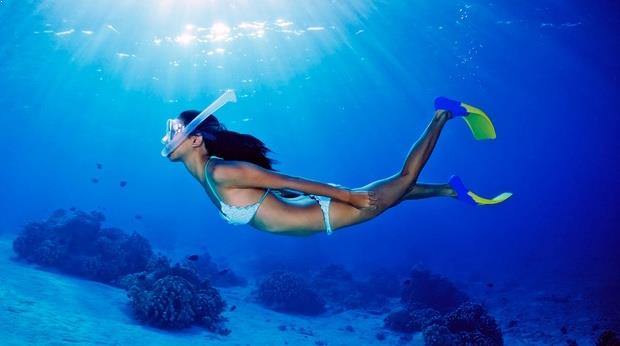
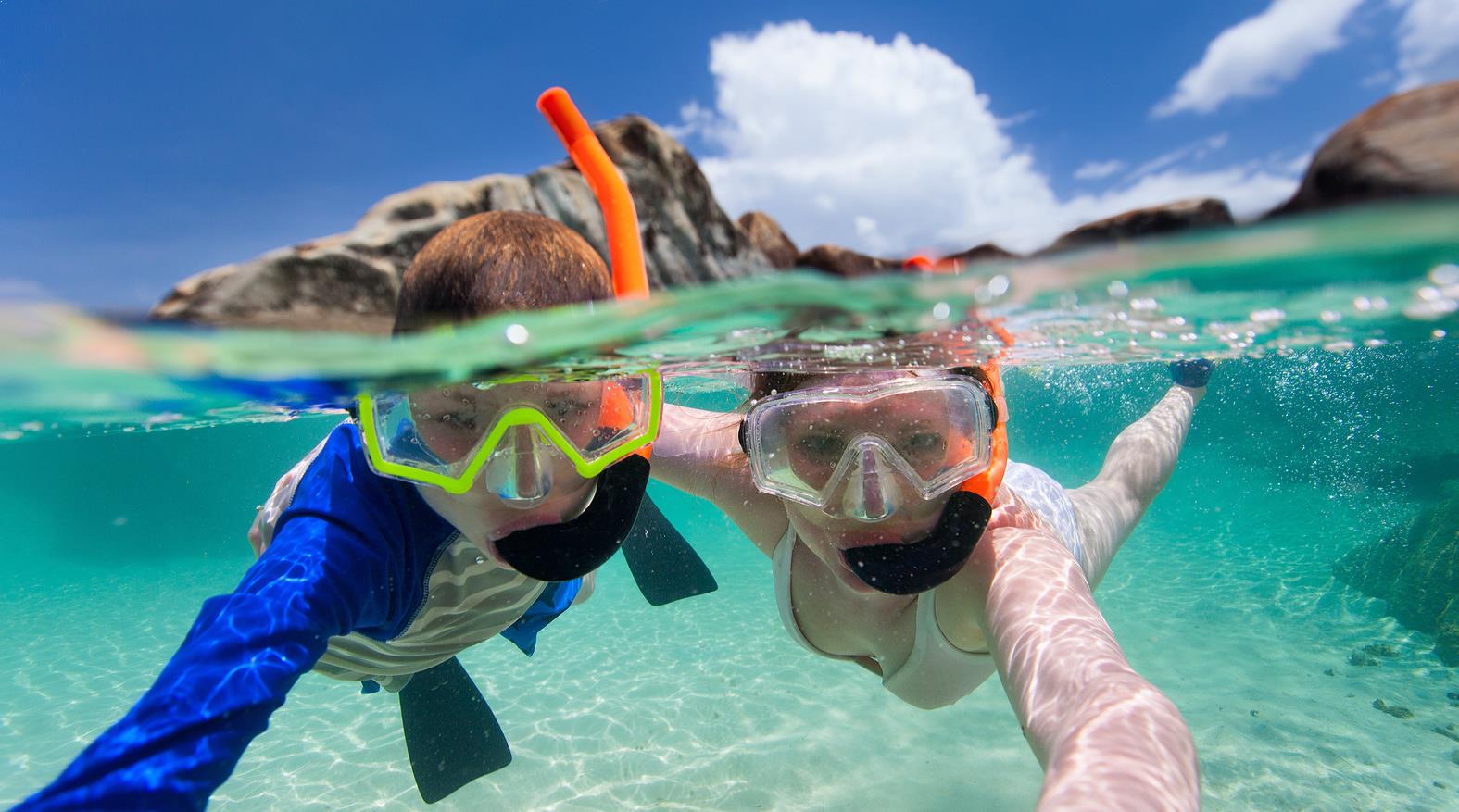
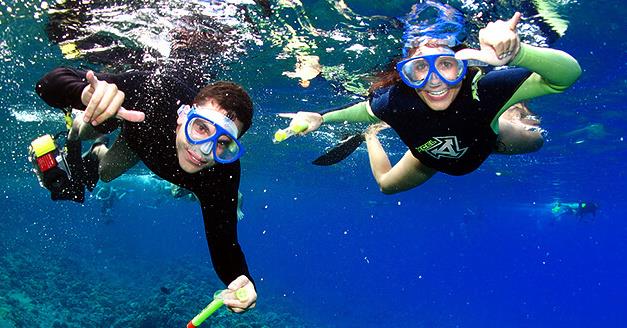
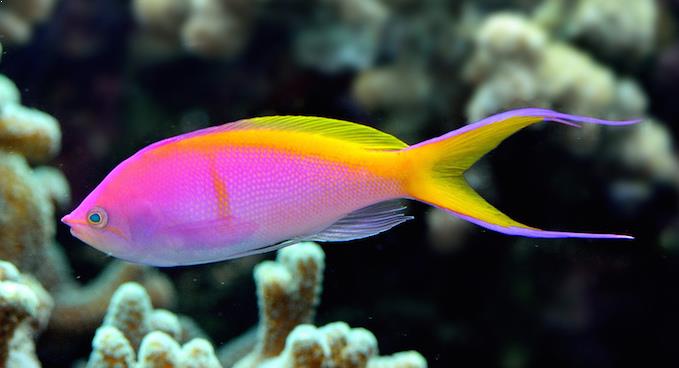
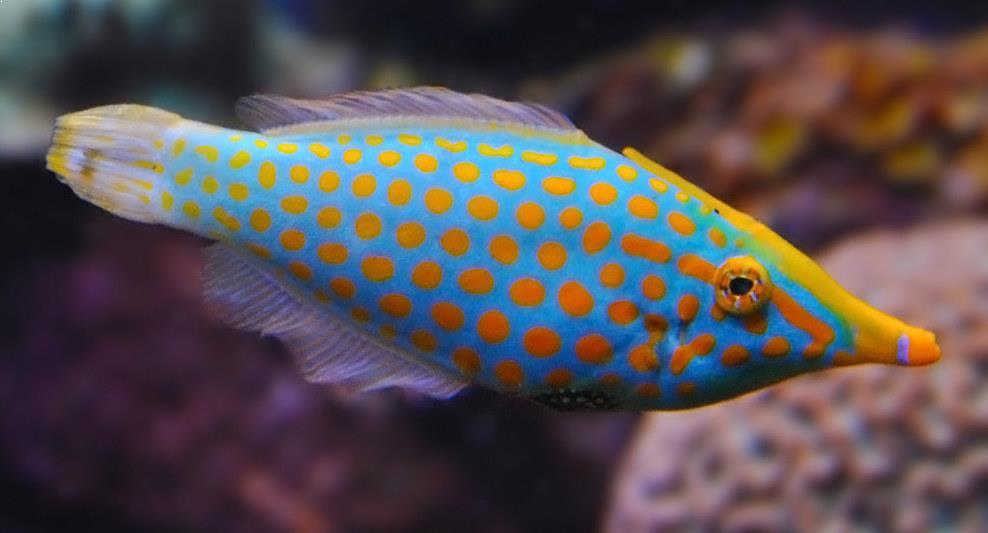




















 Top Snorkel Tips
Top Snorkel Tips 




